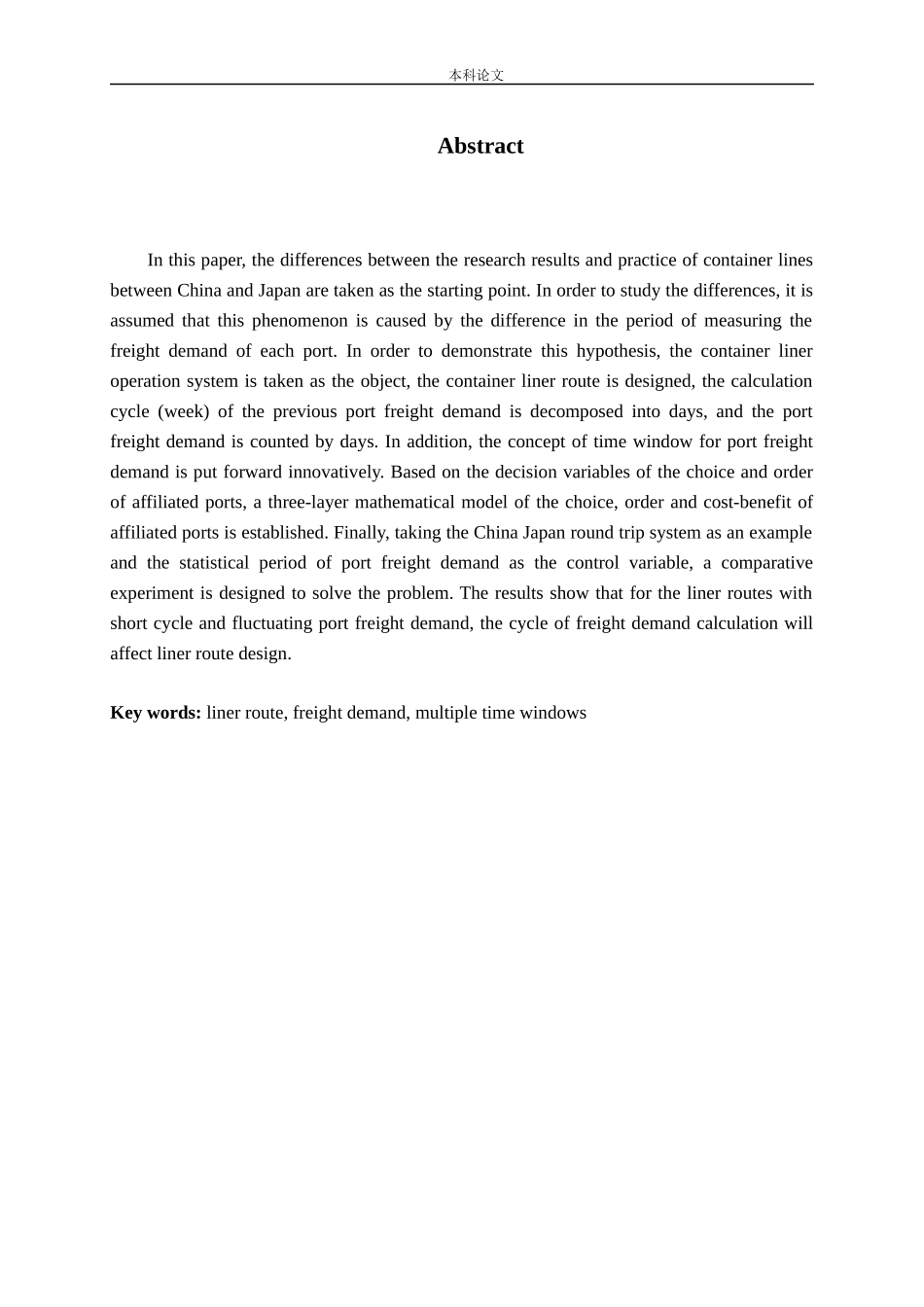本科论文考虑港口货运需求多重时间窗的集装箱班轮航线集成设计摘 要本文以中日集装箱班轮航线理论研究结果与生产实际差异为切入点,研究此差异出现原因。假设此现象是由各港口货运需求的计算周期存在差异所致。欲论证此假设,以集装箱班轮航线运营系统为对象,设计集装箱班轮航线,分解先前港口货运需求的计算周期(周)为天,以天为单位统计港口货运需求,并创新性提出港口货运需求时间窗概念。以挂靠港选择和挂靠顺序确定为决策变量,单舱利润最大化为目标函数,建立挂靠港选择、挂靠顺序确定、量本利三层数学模型。最后,以中日环绕航线系统为案例,以港口货运需求统计周期为控制变量,设计对照实验求解。结果证明,对于周期较短、港口货运需求存在波动的班轮航线,货运需求计算的周期会对班轮航线设计产生影响。关键词:集装箱班轮航线,货运需求,多重时间窗 本科论文AbstractIn this paper, the differences between the research results and practice of container lines between China and Japan are taken as the starting point. In order to study the differences, it is assumed that this phenomenon is caused by the difference in the period of measuring the freight demand of each port. In order to demonstrate this hypothesis, the container liner operation system is taken as the object, the container liner route is designed, the calculation cycle (week) of the previous port freight demand is decomposed into days, and the port freight demand is counted by days. In addition, the concept of time window for port freight demand is put forward innovatively. Based on the decision variables of the choice and order of affiliated ports, a three-layer mathematical model of the choice, order and cost-benefit of affiliated ports is established. Finally, taking the China Japan round trip system as an example and the statistical period of port freight demand as the control variable, a comparative experiment is designed to solve the problem. The results show that for the ...


